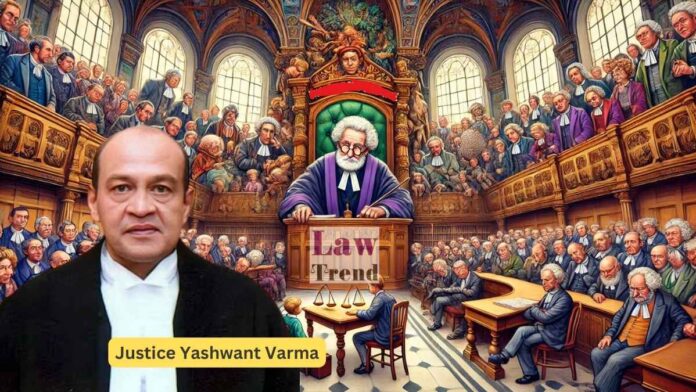In a significant move, Chief Justice of India (CJI) Sanjiv Khanna has initiated a three-member in-house inquiry into the conduct of Delhi High Court judge Justice Yashwant Varma. This follows the discovery of currency notes in his residence after a fire incident on March 14. The panel includes Chief Justice of Punjab & Haryana High Court Justice Sheel Nagu, Chief Justice of Himachal Pradesh High Court Justice G S Sandhawalia, and Justice Anu Sivaraman of Karnataka High Court.
The Constitutional Background
Under the Indian Constitution, specifically Article 124(4) and Article 218, a judge can be removed by Parliament through impeachment on grounds of “proved misbehaviour” or “incapacity.” Impeachment requires a two-thirds majority of members present and voting in both Lok Sabha and Rajya Sabha, and the approval of more than 50% of the total membership of each house. The President orders the removal following the successful vote.

The In-House Inquiry Process
The in-house inquiry is separate from the impeachment process and can be initiated by the CJI or a Chief Justice of a High Court. This mechanism was established following concerns over accountability for actions not rising to the level of impeachable misbehaviour but still inconsistent with judicial standards. This procedure was formalized following a 1995 case involving then Bombay High Court Chief Justice A M Bhattacharjee.
The Supreme Court, led by Justices K Ramaswamy and B L Hansaria, created the in-house procedure to address this gap, resulting in a five-member committee that defined the steps for remedial action against judges deviating from accepted judicial values. The procedure was revised in 1999 and revisited in 2014 amid new allegations of misconduct.
The procedure initiates when the CJI, upon receiving a complaint, may ask the Chief Justice of the concerned High Court for a preliminary report. If the report suggests a deeper investigation is needed, a three-member committee is formed. This committee conducts the inquiry adhering to natural justice rules, allowing the accused judge to present their case.
Upon concluding the inquiry, the committee reports to the CJI, indicating whether the allegations have substance and if they warrant removal proceedings. Depending on the findings, the CJI might advise the judge to resign or retire voluntarily, or in cases where allegations are not severe enough, simply place the report on record. If the judge resists resignation or retirement, the CJI can escalate the matter to the President and the Prime Minister, recommending the initiation of formal removal proceedings.
Current Status
In the case of Justice Varma, CJI Khanna has directed the Chief Justice of Delhi High Court, Devendra Kumar Upadhyaya, to withhold judicial assignments from Justice Varma pending the inquiry’s outcome. This decisive action underscores the judiciary’s commitment to maintaining integrity and trust in the legal system.
This in-house inquiry highlights the judiciary’s internal mechanisms for maintaining judicial accountability, separate from the more severe and rare process of impeachment, ensuring that the standards of judicial conduct are upheld without immediate recourse to legislative removal.







